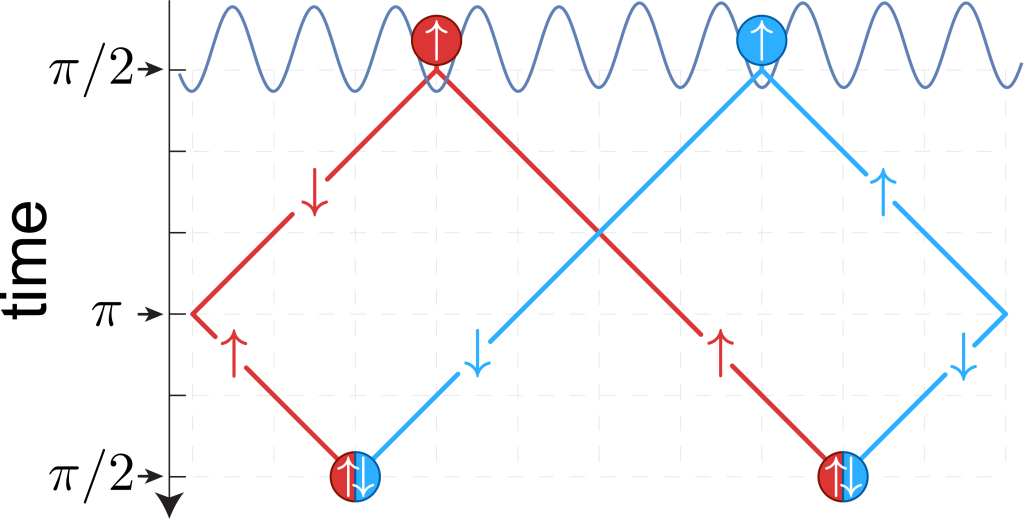Revealing quantum statistics with a pair of distant atoms
Revealing quantum statistics with a pair of distant atoms.
C. F. Roos, A. Alberti, D. Meschede, P. Hauke, H. Häffner
Phys. Rev. Lett. 119, 160401 (2017)
arXiv version: PDF
The symmetrization postulate of quantum mechanics asserts that the wave function of a system of identical particles is either completely symmetric or antisymmetric under particle exchange. The profound impact of quantum statistics on the system’s properties has been demonstrated in many experiments and put to use in quantum technological applications. In engineered quantum systems, experiments have recently been carried out, demonstrating Hong-Ou-Mandel-like effects with pairs of atoms or electrons by observation of bunching or antibunching of particles.

In our paper, we devise novel interferometric protocols for a pair of identical trapped ions or atoms that enable a measurement of the exchange phase by correlation measurements of the particles’ quantum state. We propose to demonstrate the wave function symmetry at the most elementary level with a pair of atoms or ions that never come close. Our procedure ensures that the exchange interaction energy is negligible such that the interferometric signal depends only on the exchange phase and not on details of the interaction of the particles. In realization of the protocol with atoms in state-dependent optical lattices, two-particle entanglement can be generated (in postselection) for atoms separated by large distances, enabling novel Bell tests. Our proposal demonstrates that quantum statistics could matter for trapped-ion experiments in realistically achievable parameter regimes, where the ions are always separated by macroscopic distances. This is achieved by exploiting a previously widely neglected effect of micromotion-induced breaking of the rotational symmetry of an ion trap occuring for pairs of ions.
The two protocols, which we propose, can be realized in current state-of-the-art experiments with atoms trapped in state-dependent optical lattices or tweezers, or with ions trapped in radio-frequency traps.
There is also a short synopsis published in Physics discussing our work: Direct View of Exchange Symmetry
CR, October 2017

